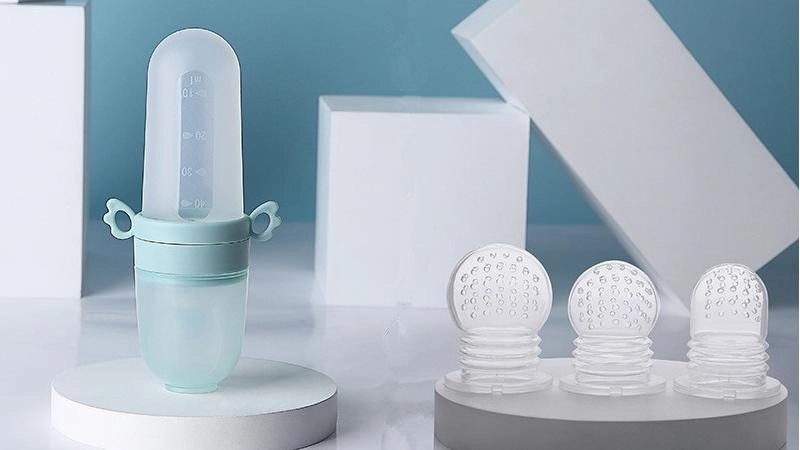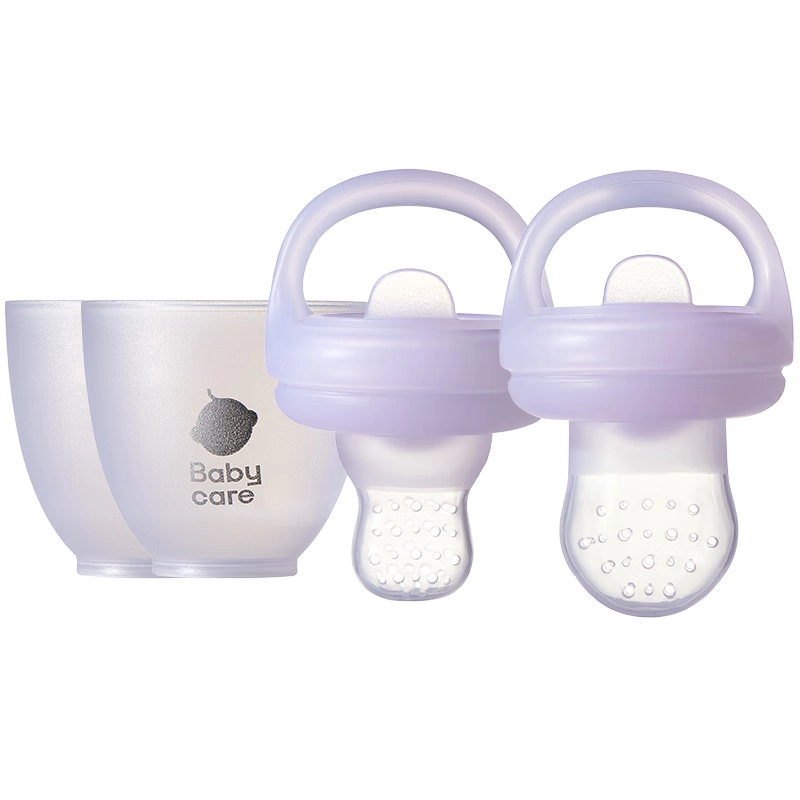
ما هي رضاعة الأحلام للأطفال؟
ما المقصود بتغذية الأحلام
الرضاعة في الأحلام هي عندما تقدمين لطفلكِ وجبة طعام أثناء غفوته أو أثناء استيقاظه بالكاد، وعادةً ما يكون ذلك في وقت متأخر من الليل. إنها طريقة لطيفة لملء بطنه دون إيقاظه بالكامل. وهذا يتيح لكِ ولطفلكِ التقاط المزيد من الطعام دون انقطاع. فقط ادفعيه بما يكفي ليأكل حتى يحصل على غذائه الليلي. يحافظ على نومهم في المسار الصحيح.
متى تبدأ تجربة تغذية الأحلام
تعتبر الرضاعة بالحلم مفيدة جدًا في الأشهر القليلة الأولى عندما يحتاج الأطفال إلى تناول الكثير من الطعام لأن بطونهم صغيرة جدًا. قد ترغبين في تجربتها إذا كان طفلكِ الصغير يستمر في الاستيقاظ جائعاً في الليل. كما أنها رائعة إذا كان لا ينام بشكل منتظم. بالإضافة إلى ذلك، يمكن أن يساعدك ذلك على تنظيم أوقات إطعامه مع أوقات نومك.
كيف تغير التغذية في الأحلام النوم
لماذا تساعد الرضاعة في الأحلام على النوم
من الأشياء الرائعة في الرضاعة بالحلم أنها تساعد طفلك على النوم لفترة أطول. فهي تمنع الجوع من إيقاظه من النوم. وهذا يجعل وقت النوم أكثر قابلية للتنبؤ به لكما. عندما يرضع طفلكِ قبل منتصف الليل بوقت كافٍ، من المحتمل أن تحصلي أنتِ أيضًا على مزيد من الراحة. وهذا مكسب لجميع أفراد العائلة.
كما تؤسس الرضاعة في الأحلام روتينًا مريحًا يبني عادات نوم جيدة. يحب الأطفال الأشياء التي يشعرون بأنها مألوفة. إن إضافة رضاعة الأحلام إلى ليلتهم الليلية يمكن أن تجعلهم يشعرون بالأمان والاستقرار. وبمرور الوقت، يمكن أن يساعدهم ذلك على تعلم الهدوء والنوم لفترات أطول.
أشياء يجب الانتباه لها
لا تكون الرضاعة في الأحلام مثالية دائمًا. إذا لم تكوني حذرة، فقد يؤدي ذلك إلى إفساد إيقاع نوم طفلك الطبيعي. قد يؤدي القيام بذلك كثيرًا إلى جعل الأمر صعبًا عليه لمعرفة مدى جوعه أثناء نموه. وقد يؤثر ذلك على كيفية نومه من تلقاء نفسه.
أيضًا، قد لا يهضم بعض الأطفال الحليب جيدًا عندما يكونون نصف نائمين. وهذا يمكن أن يجعلهم غير مرتاحين أو يسبب لهم الارتجاع. راقبي كيف يتعامل طفلك مع رضعات الأحلام. إذا بدا لكِ أن هناك شيئاً غريباً، فيمكنك تغيير الأمور.
كيفية تثبيت مسمار تغذية الأحلام
خطوات سهلة لتغذية الأحلام
- اختاري وقتاً مناسباً: استهدفي من الساعة 10 مساءً إلى منتصف الليل. فهو يتناسب مع أجواء نوم معظم الأطفال.
- حافظ على هدوئك: أطفئي الأضواء واخفضي الضوضاء. هذا يحافظ على الهدوء والدفء.
- أيقظيهم برفق: افركي خده برفق أو ارفعيه قليلاً. لا توقظهم بالكامل.
- أطعميه: دعي طفلك يشعر بالراحة. دعيه يرضع أو يأخذ الزجاجة بسهولة.
- راقبي إشاراتهم: ابحثي عن علامات انتهائهم، مثل الابتعاد أو المص ببطء.
- تجشؤهما: حتى لو كانا نائمين، قومي بتجشؤهما برفق لتجنب أي مشاكل في الهواء المحبوس.
- ضعيه مرة أخرى: ضعيه مرة أخرى في سريره أو مهده. حافظي على هدوئه.
زلات يجب تجنبها
- لا توقظيه طوال الوقت: تجنبي إيقاظ طفلك بالكامل. فقد يجعل ذلك من الصعب عليه أن ينام مرة أخرى.
- لا تبالغي في الطعام: قدمي فقط ما يحتاجه طفلك. لا تدفعيه لتناول المزيد من الطعام.
- التزم بجدول زمني: حافظي على ثبات التوقيت. فالتبديل كثيراً قد يؤدي إلى إرباك ساعة الجسم.
- لاحظي ردود أفعاله: إذا كان طفلكِ يبدو مضطربًا أو غير مرتاح بعد الرضاعة في الحلم، ففكري في تعديل الأمور. قد تحتاجين حتى إلى التوقف.
من خلال التعود على الرضاعة في الأحلام واستخدام هذه النصائح، يمكنك تعزيز تناول طفلك للطعام ليلاً. وسيساعد ذلك جميع من في المنزل على النوم بشكل أفضل أيضاً.
تغذية الأحلام: متى تبدأ ومتى تتوقف
أفضل سن لتغذية الأحلام
تبدأ الرضاعة بالحلم عادةً في الأشهر الأولى عندما يحتاج الأطفال الرضع إلى الكثير من الوجبات الصغيرة لأن معدتهم صغيرة. وهي رائعة خاصة للأطفال من عمر 6 أسابيع إلى 4 أشهر. فهي تساعد على مواءمة أكلهم مع مواعيد نومك. في هذا العمر، يمكن أن يعني الطعام الإضافي من رضاعة الأحلام فترات نوم أطول.
بحلول عمر 6 أشهر تقريبًا، غالبًا ما ينام الأطفال طوال الليل دون الحاجة إلى الرضاعة. وعندها يبدأ العديد من الآباء والأمهات بالتخفيف من الرضاعة في الأحلام. يأكل الأطفال أكثر أثناء النهار ويصبحون أفضل في تهدئة أنفسهم.
كيفية التخلص التدريجي من تغذية الأحلام
يجب أن يكون التخفيف من رضاعة الأحلام بطيئًا وثابتًا للحفاظ على سلاسة الأمور. حاولي إعطاء حليب أقل قليلاً أثناء الرضاعة في الحلم على مدى بضع ليالٍ. فهذا يساعد طفلك على التأقلم دون أن يشعر بالجوع في منتصف الليل.
يمكنك أيضًا دفع رضعة الأحلام مبكرًا كل ليلة. وبمرور الوقت، يمكن أن يندمج ذلك مع آخر رضعة قبل النوم. ويؤدي ذلك إلى الاستغناء عن الرضاعة في وقت متأخر من الليل تماماً. تحققي من حالة طفلك. تأكدي من أنه لا يزال ينمو ويزداد وزنه بشكل جيد خلال هذه الفترة.
أدوات وحيل لتغذية الأحلام الرائعة
نصائح لإنجاح تغذية الأحلام
للحصول على تغذية رائعة في الأحلام، حافظ على ثباتك وحافظ على هدوئك. اختاري وقتاً بين الساعة 10 مساءً ومنتصف الليل. فهو يتماشى مع أنماط نوم معظم الأطفال. أيقظي طفلك بلطف دون إيقاظه بالكامل. ضربة ناعمة على خده أو رفعه برفق تفي بالغرض.
قدمي له حليب الأم أو الحليب الصناعي مع إبقائه دافئًا. انتبهي جيداً لإشاراته. إذا كان يبطئ أو يستدير بعيدًا، فمن المحتمل أن يكون قد شبع. بعد الرضاعة، قومي بتجشؤه برفق حتى لو كان يشعر بالنعاس. فهذا يحافظ على راحته من خلال تجنب الهواء المحبوس.
الحفاظ على هدوء المزاج
الأجواء الهادئة هي كل شيء لرضاعة الأحلام. اجعلي الأضواء خافتة وحافظي على هدوء المكان لتجنب إثارة طفلك. تجنبي أي شيء قد يوقظه، مثل الأحاديث الصاخبة أو تغيير الحفاضات إلا إذا كنتِ بحاجة إلى ذلك.
يمكن للنغمات الهادئة أو الضوضاء البيضاء أن تبقي الأمور هادئة. جهزي أدوات الرضاعة، مثل الزجاجات أو الحلمات مسبقًا. فهذا يجنبك أي فواق أثناء الرضاعة.
تعرّف على وحدة تغذية الأطفال المصنوعة من السيليكون من CASINDA لإرضاع الأحلام

ما هو رائع في وحدة تغذية كاسيندا
تصميم آمن وصديق للطفل
كاسينداإن مغذي الأطفال المصنوع من السيليكون هو كل ما يتعلق بالحفاظ على سلامة طفلك. فهي مصنوعة من السيليكون المخصص للطعام، وخالية من المواد السيئة مثل BPA. كل رشفة آمنة وخالية من القلق. تحتوي وحدة الإرضاع على حلمات سيليكون ناعمة تشبه الرضاعة الطبيعية. إنها رائعة للأطفال الذين يرضعون أو يستخدمون الرضّاعات.
تحتوي على فتحات مضادة للمغص لتقليل الهواء أثناء الرضاعة. يساعد ذلك على تجنب انزعاج الغازات أو الارتجاع. تدوم بنية المغذي القوية لفترة طويلة مع الحفاظ على سلامة طفلك.
سهولة فائقة في الليل
مغذي كاسيندا مصنوعة لراحتك. فتحة فمها الواسعة تجعل عملية التنظيف سهلة للغاية. وهذا يبعد الجراثيم. الفتحة بيد واحدة مثالية للرضاعة الليلية - يمكنك استخدامها دون إزعاج نوم طفلك. غطاء مانع للتسرب يمنع التسرب، حتى لو انقلب رأساً على عقب. هذا منقذ للرضاعة في وقت متأخر من الليل عندما تكونين نصف نائمة.
كيف تجعل وحدة التغذية CASINDA تغذية الأحلام أفضل
تجعل رضّاعة الأطفال المصنوعة من السيليكون من CASINDA إرضاع الطفل أسهل بكثير وأكثر راحة لكِ ولطفلك. تصميمها البسيط يوفر الوقت في الإعداد. يمكنك التركيز على إبقاء الأمور هادئة لتتمكني من إرضاع طفلك بسلاسة في الأحلام.
تعمل الميزات الذكية التي تتميز بها وحدة الإطعام على حل المشاكل الشائعة التي تواجهها أثناء الرضاعة الليلية، مثل الانسكابات والحفاظ على نظافة الأشياء. مصممة خصيصًا للأطفال الرضع، فإن كازيندا منتجات أطفال السيليكون دعم عادات التغذية الصحية. يساعد عائلتك على الاستمتاع بليالي أكثر راحة.
التعليمات
س: كيف تؤثر الرضاعة في الأحلام على أنماط نوم طفلي؟
ج: يمكن أن تساعد الرضاعة في الأحلام طفلك على النوم لفترات أطول من خلال منع الجوع من إيقاظه. كما أنها تضع روتينًا مريحًا يجعل وقت النوم أكثر قابلية للتنبؤ به. يدعم جهاز إرضاع الطفل السيليكوني هذا الأمر من خلال الحفاظ على هدوء وفعالية الرضاعة، مما يقلل من الاضطرابات. ومع ذلك، إذا لم يتم ذلك بعناية، فقد يؤدي ذلك إلى إفساد إيقاع نومه الطبيعي أو جعله يعتمد على الرضاعة ليعود إلى النوم.
س: متى يجب أن أبدأ بالرضاعة في الأحلام باستخدام رضّاعة الأطفال المصنوعة من السيليكون؟
ج: يمكنك البدء بالرضاعة في الأحلام في عمر 6 أسابيع، ولكن من الأفضل أن تبدأ الرضاعة في الأحلام عندما يكون لدى طفلك نمط نوم منتظم إلى حد ما، عادةً ما يكون ذلك في عمر يتراوح بين شهرين إلى ثلاثة أشهر. في هذا العمر، تحتاج بطونهم الصغيرة إلى رضعات متكررة، وتساعدهم الرضاعة بالحلم. تتميز رضّاعة الأطفال المصنوعة من السيليكون بأنها آمنة للرضّع، فهي مصنوعة من السيليكون المخصص للطعام والخالي من المواد الكيميائية الضارة مثل BPA. كما أن تصميمها المريح يجعلها مثالية للأطفال الصغار، سواء أكانوا يرضعون رضاعة طبيعية أم زجاجة الرضاعة.
